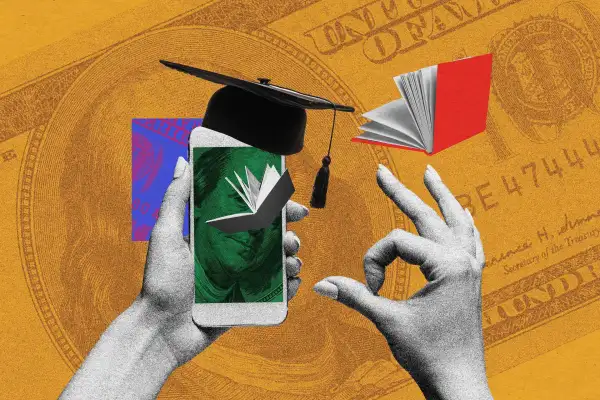The On-Ramp Period for Student Loan Payments is Ending: Here’s How to Prepare

The temporary On-Ramp period for student loan payments ends on September 30, 2024. This means borrowers will need to start making payments again, and interest will begin to accrue. While this might seem daunting, a little preparation can help you smoothly transition back into regular payments.
Here are three steps to help you get ready to start repaying your student loans.
1. Understand Your Loan Details
First, log into your loan servicer’s website and review your loan details. Take a look at your due date, type of loan, loan balance, interest rate, and repayment terms. This will help you plan your budget and monthly payments. Also, make sure your contact information is up-to-date with your loan servicer so you don’t miss any important updates about your loan.
2. Explore Repayment Plan Options
Graduates with federal student loans have various repayment plan options that could make their financial burden more manageable. Federal student loans offer several plans tailored to different financial situations, such as Income-Driven Repayment (IDR) plans that base your monthly payments on your current income. Exploring these options can help you find a plan that fits your budget and long-term goals. Start by logging into your loan servicer’s website or contacting them directly to see which plans you qualify for and which best suit your current financial situation.
Parents with Parent PLUS Loans can opt for an Income-Contingent Repayment (ICR) Plan by first consolidating your Parent PLUS Loans into a Direct Consolidation Loan. To explore this option, visit the Federal Student Aid website and complete the online application for a Direct Consolidation Loan.
3. Consider Refinancing Your Student Loans with SoFi
Graduates with student loans and parents with Parent PLUS Loans can both benefit from refinancing with SoFi.* Refinancing can lower your interest rates, helping you save money and reduce your monthly payments. Here’s how SoFi can help:
- Lower Interest Rates: SoFi offers competitive fixed and variable rates, potentially saving you thousands over the life of your loan.
- Reduced Monthly Payments: Lowering your interest rate could result in more manageable monthly payments.
- Flexible Terms: Choose a repayment term that fits your budget and financial goals.
- No Fees: Enjoy refinancing with no origination fees, prepayment penalties, or late fees.
- Fast and Easy Process: The application process is quick, with no impact on your credit score to explore options.
See How Much You Can Save on Student Loan Payments
Refinancing with SoFi can help make managing your student loans easier and more affordable. Lowering your monthly payments frees up money for other goals, like buying a home or saving for retirement. Plus, it only takes two minutes to explore your options, and it won’t affect your credit score.†
Click here to see how much you can save on your student loan payments by refinancing with SoFi.
*SoFi’s Disclosures:
If you are a federal student loan borrower, you should consider all of your repayment opportunities including the opportunity to refinance your student loan debt at a lower APR or to extend your term to achieve a lower monthly payment. Please note that once you refinance federal student loans you will no longer be eligible for current or future flexible payment options available to federal loan borrowers, including but not limited to income-based repayment plans or extended repayment plans.
Terms and conditions apply. SOFI RESERVES THE RIGHT TO MODIFY OR DISCONTINUE PRODUCTS AND BENEFITS PROSPECTIVELY BASED ON MARKET CONDITIONS AND BORROWER ELIGIBILITY. Your existing student loan(s) must total a minimum of $5,000 to be eligible for refinancing. Additional terms and conditions may apply. To qualify, a borrower must be a U.S. citizen or other eligible status, be residing in the U.S., have graduated with an associate degree or higher from an eligible Title-IV-accredited college or graduate program, and meet SoFi’s pre-established underwriting requirements, including verification of sufficient income to support your ability to repay; see SoFi.com/eligibility. Lowest rates reserved for the most creditworthy borrowers. You may pay more interest over the life of the loan if you refinance with an extended term.
SoFi refinance loans are private student loans and do not have the same repayment options that the federal loan program offers, or may become available, such as Public Service Loan Forgiveness, Income-Based Repayment, Income-Contingent Repayment, PAYE or SAVE. Information current as of 02/06/24 and subject to change. SoFi Student Loans are originated by SoFi Bank, N.A. Member FDIC. NMLS #696891 (www.nmlsconsumeraccess.org).
† To check the rates and terms you qualify for, SoFi conducts a soft credit pull that will not affect your credit score. However, if you choose a product and continue your application, we will request your full credit report from one or more consumer reporting agencies, which is considered a hard credit pull and may affect your credit.
